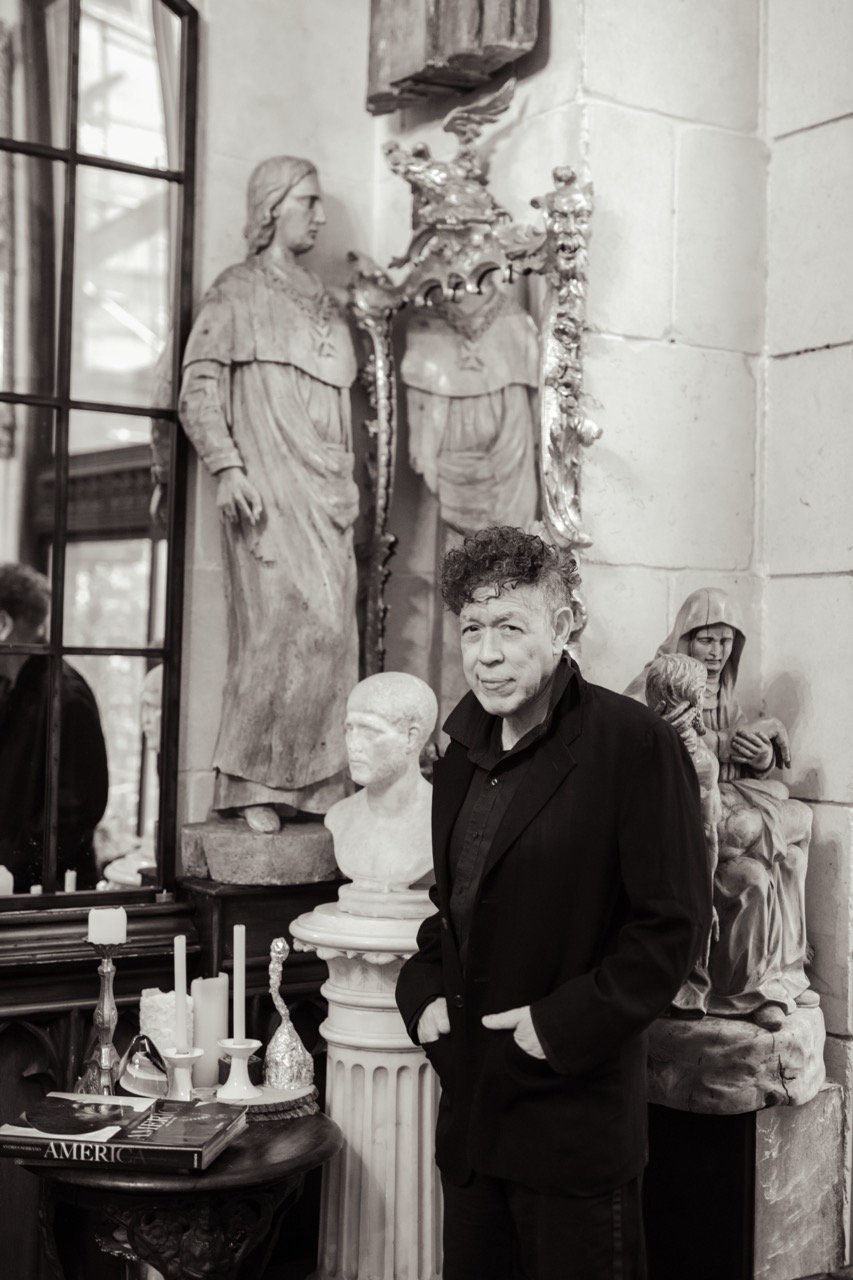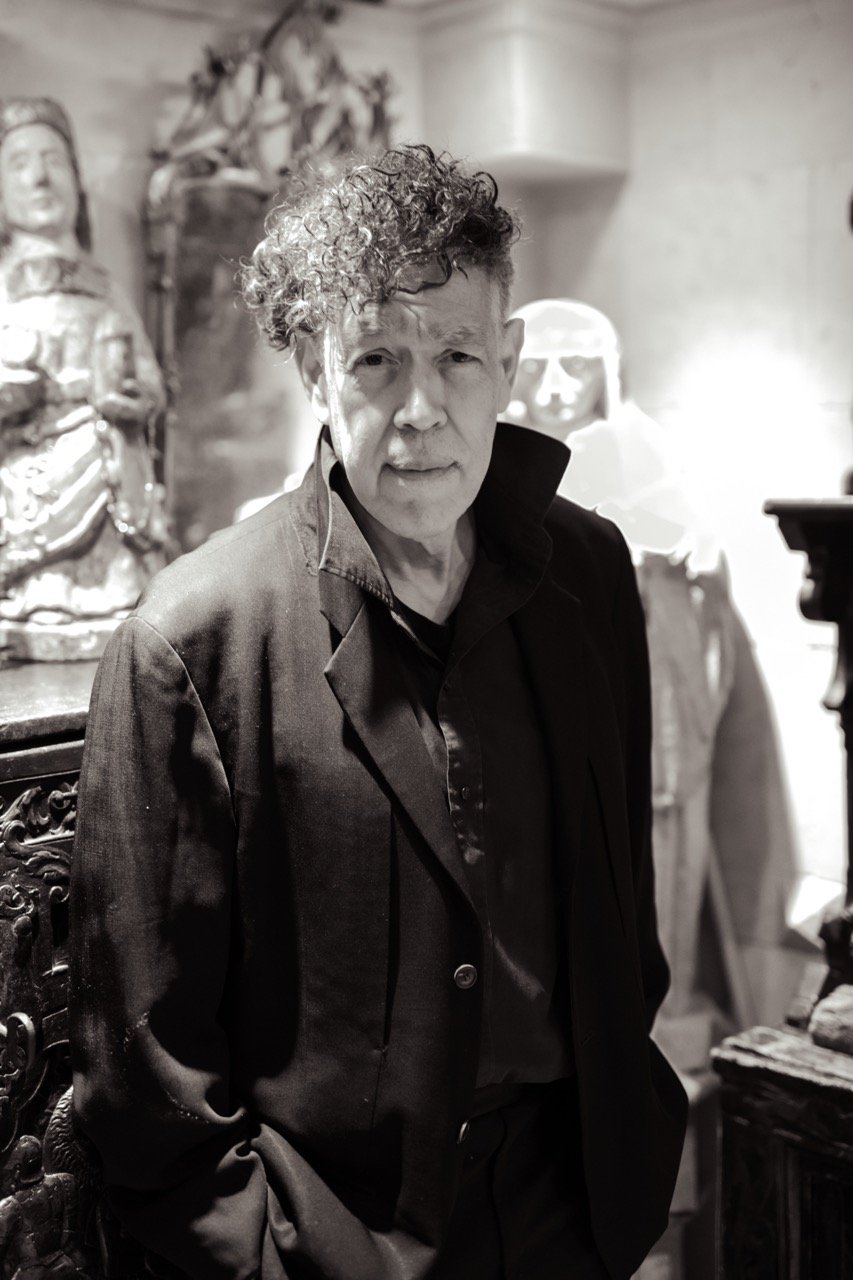Confessions, Gabriele Tinti & Andres Serrano
Photography by Pierre Crosby
In this highly distinctive artistic collaboration, Gabriele Tinti and Andres Serrano have produced a haunting meditation on religion, violence, and physicality.
Serrano is one of the world’s most renowned artists. His new works mark a departure from the medium with which he is most closely associated, while also exemplifying the imagination and critical intelligence that he has always brought to bear upon it. They originated as oil pastel drawings that Serrano made over black and white photographs of sculptures by Michelangelo, in a process that he likens to automatic writing: “The resulting images are different from the pictures that inspired them,” he writes, “but I hope the spirit of Michelangelo is there.” Serrano’s Confessions images amount to a formidable engagement not only with an artistic predecessor, but also, like so much of his work, with Christian iconography. Embodying a very particular kind of beauty, they lend a new emotional force to ostensibly familiar artistic depictions of religious narratives.
Gabriele Tinti:
I have always admired the powerful spiritual tension in your works. I was brought up by a Catholic family - as you were - and this led me to worship heroes, saints and martyrs. Ours is a culture that conceives ‘seeing’ as a result of ‘hurting’, the manifestation of otherness as the result of violence of the tangible, the corporal. This is why I think our book is linked to our respective relationships with faith.
Andres Serrano:
Of course. Your Catholic experience is different from mine but we were both raised as Christians. Although, I did my Holy Communion and Confirmation, my mother did not have any religious imagery around the apartment except for a cheap plaster statue of the Virgin and a picture of Jesus on a calendar. She also had a wallet sized picture of Jesus which she kept in her wallet along with J.F. Kennedy. We went to Mass every Sunday to the church around the corner but were always late and would get to Mass a few minutes before it ended. It was always packed so we never really able to get inside.
Gabriele Tinti:
You die to be resurrected like Jesus, the Christians say. The problem is to accept that we resurrect as earth, as vegetation that feeds other life. We (as western people) are unable to see the beauty in dust, in emptiness. We feel frightened and terrified before the void, that’s why we always react and try to resist. All of Michelangelo’s masterpieces are about that, especially his last works, which are all meditatio mortis, inner monologue, a dramatic spiritual dialogue, acts of resistance. I mean, I’m thinking about the different “Pietà” versions. In the "Pietà Bandini" he portrayed himself as Nicodemus, a troubled, tormented Pharisee, symbol of those who are not resolved. And your work on those pictures, made up of veins of colour, of wounds, signs, I think further amplifies all this.
Andres Serrano:
Michelangelo was a devout Catholic and along with Leonardo Da Vinci, two of the greatest artists who ever lived. But their greatness as artists was not based on their faith but on their genius and vision. To be an artist is to be a martyr, you’re chained to your visions, your passion, your suffering and your work. Michelangelo had his demons, his obsessions and his pain. We are all artists for different reasons but arrive at the same place: alone with our work.
Gabriele Tinti:
For Christians while the flesh falls and turns into a corpse, the soul never falls, it does not change its name as the flesh does, becoming something else. I don’t believe that but still I am the result of my education…and still - even if I don’t believe it - I want to save myself, my ego, my art. I want to save myself from dust. This is what the book is about, at least the written part of it: a wish to be freed through blood and suffering, through beauty and art.
Andres Serrano:
We all want to be something, now and forever. We want for others to know we existed and prove it. There’s nothing wrong with planning to be in both places.
Gabriele Tinti is an Italian poet and writer. He has worked with the J. Paul Getty Museum, the Metropolitan Museum of Art, and the British Museum (among many other institutions), and his poems have been performed by actors including Abel Ferrara, Malcolm McDowell, Kevin Spacey, Stephen Fry. In 2018 his ekphrastic poetry project Ruins was awarded the Premio Montale with a ceremony at the Museo Nazionale Romano in Palazzo Altemps.
Andres Serrano is an American artist and photographer. Renowned for his ambitious and challenging installations, he has won acclaim for series of photographs including America (“the photographs give such vivid presence to their subjects that it is hard not to feel genuinely moved”—The New York Times) and Torture (“both a call for justice and a compassionate portrayal of the human plight”—The Guardian). The images featured in Confessions have grown out of Serrano’s profound engagement with the work of Michelangelo.




